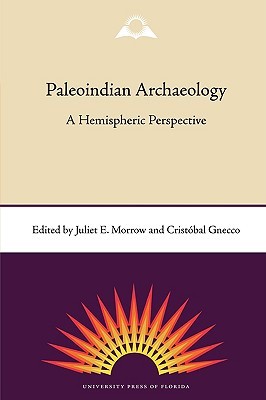
- We will send in 10–14 business days.
- Publisher: University Press of Florida
- ISBN-10: 0813033896
- ISBN-13: 9780813033891
- Format: 15.2 x 22.9 x 1.6 cm, softcover
- Language: English
- SAVE -10% with code: EXTRA
Paleoindian Archaeology (e-book) (used book) | bookbook.eu
Reviews
Description
"Paleoindian Archaeology provides much needed hemispheric and hands-on analytical perspectives on the early human occupation of the Americas. The contributors explore similarities and differences among the early sites and assemblages in North, Central, and South America, providing a refreshing yet complementary approach to more localized studies."--David G. Anderson, University of Tennessee
Since the 1997 report of investigations into the Monte Verde site in Chile, there has been a surge of interest in early habitation sites and a polarization of opinion about the antiquity of humans in the Americas. While Clovis remains the earliest undisputed cultural complex in the New World and one of the fastest and most successful diasporas in human history, many scholars argue that this culture did not enter an empty landscape. This volume samples sites from Alaska to the southern cone of South America to provide a better understanding of the processes by which the early settlement of the Americas occurred at the end of the late Wisconsonian Ice Age.
With broad geographical and topical breadth, Paleoindian Archaeology provides theoretical perspectives on early migrations, interpretations of single sites, and comparative studies of material culture. Included are a synthesis on radiocarbon dating, a critique of Paleoindian studies, a reconstruction of the Clovis drought based on geomorphological and paleo-environmental data, several site specific studies (one on the only known Clovis burial in the New World), discussions on fluted points from South America, and three studies comparing North and South American evidence (grassland adaptations, stone technologies, and Paleoindian artifacts).
Juliet E. Morrow is associate professor of anthropology at the University of Arkansas-Fayetteville and station archaeologist with the Arkansas Archaeological Survey. Cristobal Gnecco is professor of anthropology at the Universidad del Cauca, Colombia.
EXTRA 10 % discount with code: EXTRA
The promotion ends in 18d.12:44:55
The discount code is valid when purchasing from 10 €. Discounts do not stack.
- Publisher: University Press of Florida
- ISBN-10: 0813033896
- ISBN-13: 9780813033891
- Format: 15.2 x 22.9 x 1.6 cm, softcover
- Language: English English
"Paleoindian Archaeology provides much needed hemispheric and hands-on analytical perspectives on the early human occupation of the Americas. The contributors explore similarities and differences among the early sites and assemblages in North, Central, and South America, providing a refreshing yet complementary approach to more localized studies."--David G. Anderson, University of Tennessee
Since the 1997 report of investigations into the Monte Verde site in Chile, there has been a surge of interest in early habitation sites and a polarization of opinion about the antiquity of humans in the Americas. While Clovis remains the earliest undisputed cultural complex in the New World and one of the fastest and most successful diasporas in human history, many scholars argue that this culture did not enter an empty landscape. This volume samples sites from Alaska to the southern cone of South America to provide a better understanding of the processes by which the early settlement of the Americas occurred at the end of the late Wisconsonian Ice Age.
With broad geographical and topical breadth, Paleoindian Archaeology provides theoretical perspectives on early migrations, interpretations of single sites, and comparative studies of material culture. Included are a synthesis on radiocarbon dating, a critique of Paleoindian studies, a reconstruction of the Clovis drought based on geomorphological and paleo-environmental data, several site specific studies (one on the only known Clovis burial in the New World), discussions on fluted points from South America, and three studies comparing North and South American evidence (grassland adaptations, stone technologies, and Paleoindian artifacts).
Juliet E. Morrow is associate professor of anthropology at the University of Arkansas-Fayetteville and station archaeologist with the Arkansas Archaeological Survey. Cristobal Gnecco is professor of anthropology at the Universidad del Cauca, Colombia.


Reviews